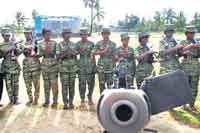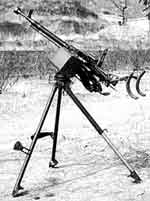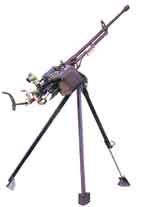 |
|||||||
| |
|||||||
| Is this violence or low-intensity war? * LTTE brings in more anti-aircraft and
anti-tank weapons It was President Mahinda Rajapaksa who sounded a warning to Ministers at the weekly Cabinet session last Wednesday evening. He said there was information that the Liberation Tigers of Tamil Eelam (LTTE) was targeting VIPs and urged them to take extreme precautions. The information had come from sources in Canada and France. They spoke of attacks in Colombo on Thursday. He felt his Ministers should be kept informed. He said the matter had also been discussed by the National Security Council that afternoon. In the ensuing discussion he made clear the Government would not cow down to terrorist threats under any circumstances. As midnight approached, Police Chief Chandra Fernando had placed the City of Colombo under a tight security cordon. Assisted by the security forces, police stepped up searches of vehicles and premises that were suspect. Vehicles entering the World Trade Centre (WTC) at Echelon Square, said to be one of the main targets, were banned. Besides a number of commercial establishments, the WTC housed the Government's Peace Secretariat. Leading firms, banks and state concerns introduced their own security arrangements. That included checks on persons and vehicles entering their premises.
It was only a week earlier President Rajapaksa warned ministers not to establish any direct contacts with anyone in the LTTE. This was after he came to know of an instance where a deputy minister, known for his loquacious outbursts, offered to travel to Kilinochchi to negotiate with guerrilla leaders. A check on his contacts revealed that they were operatives of LTTE intelligence wing leader Pottu Amman. Mr. Rajapaksa apprised members of the National Security Council of this instance during a previous meeting. That was to keep them informed of how the LTTE was attempting to befriend Government parliamentarians among others. Was the warning of an LTTE attack on targets in Colombo on Thursday a hoax? Or was it a deliberate exercise intended to create panic so the guerrillas could study the responses of the security forces and the police? Detailed answers may not be known. But the Government did not want to take any chances and thought precautionary measures were the best answer. Most ministers cut short their programmes and avoided travel. So did some senior Government officials. The move did create panic with attendance dropping in some offices. Adding to that were inquiries from abroad whether Colombo was under siege. It was particularly worrisome for the tourist and hospitality industry.
For the security authorities there were compelling reasons for the tighter security measures. The infiltration by a female suicide bomber into Army Headquarters and the attempt on the life of Army Commander Lt. Gen. Sarath Fonseka had laid bare the vulnerability of highly secured locations in the city to guerrilla attacks. There was, in addition, credible intelligence in the recent weeks of more guerrilla cadres arriving in the City to conduct surveillance on a number of targets including VIPs. Heightening these concerns was the recent arrest of a soldier in Vavuniya. A corporal of Army Service Corps came under surveillance due to his suspicious conduct. He has now confessed that he had been passing information to Tiger guerrillas. He had been paid a monthly fee of Rs 20,000. Already the soldier, now under intense interrogation, has made some startling revelations. He had dealt with the LTTE through parties supplying provisions to the Army. Are there others engaged in such treacherous acts? Probing that has become a new task for military intelligence. Thursday's scare in the City clearly highlights the growing uncertainty spawned by the ongoing low-intensity Eelam War IV. Just a day after this scare, Norway's peace facilitators - International Development Minister Erik Solheim and Special Envoy Hanssen Bauer arrived in Colombo in a bid to salvage a sinking peace process. On Friday they held talks with President Rajapaksa and his senior officials associated with the peace process. It was Mr. Solheim who warned that the two sides, the Government and the LTTE, were sliding back to war. But the Government does not agree. It says there is only violence and it is ready to meet it. "There is violence even in New York city. That does not mean there is war there," argued former UN diplomat and now Head of the Government Peace Secretariat, Palitha Kohona. Our Political Editor deals with this aspect on the opposite page. If one thinks of war in a conventional sense they may be right in saying there is no war in Sri Lanka. Whatever the nomenclature is, there certainly is a confrontation going on. It has come to be acknowledged by foreign governments, Norway, the Sri Lanka Monitoring Mission (SLMM) and many others as a "low intensity" war. It reached that phase after what was termed as a "shadow war" the two sides fought earlier. All this was during the four-year-long ceasefire.
Since November 18, 2006, the day President Mahinda Rajapaksa was voted to office, until yesterday, an average of three security forces personnel and policemen have been killed every day in Tiger guerrilla attacks. The total for the period is over 212. Here is a break down: Army 99, Navy 71, Air Force 3, Police 22 and Auxilliary Forces 17. In addition over 176 civilians have been killed. This precludes civilian deaths in guerrilla-dominated areas. Since the Ceasefire Agreement of February 22, 2002, over 645 Government troops have been reported killed and over 360 said to be missing. And barely a day passes without guerrilla attacks. Yesterday, the guerrillas directed 60 mm mortar fire at the Army camp in Kinnayadi near Valachchenai (Batticaloa district). Army officials say this was intended to provoke them to retaliate. It is in this backdrop that Government troops and Tiger guerrillas have heightened military preparations in the recent weeks. The Government's position is that such stepped-up preparedness is necessary in the wake of two main reasons: the continued attacks on troops and the LTTE strengthening of its military capability using the four-year-long ceasefire. In other words, they insist that the role is defensive though air strikes on Sampur and the guerrilla airstrip in Iranamadu were limited counter measures. Such measures followed LTTE strikes. The fact that such capability gives them the strength to play an effective offensive role is obvious. This is in the backdrop of continued preparations by the LTTE. Two weeks ago, Tiger guerrilla leader Velupillai Prabhakaran detailed four of his confidants in the military wing - Sea Tiger leader Soosai, Lawrence, Ilampirathi and Amuthan to go from village to village in the Wanni and brief civilians how to cope with a war. Last week they covered villages in the Mullaitivu district where they addressed small group meetings. The roles for civilians who had undergone military training were spelt out. Such roles including combat duties for the able bodied, care of casualties and helping in movement of supplies to the front lines for the others were detailed out. In addition all civilian families have been told to stock dry rations since food shortages may occur. The group was to continue their meetings in guerrilla-dominated areas of Mannar and Vavuniya districts. However, Veeramani (Subramaniam Vadivel), the military leader in charge of LTTE's defences in the Nagerkovil area was killed. Intelligence sources say he was wounded during artillery attacks by the Army last week and later succumbed to his injuries. However, LTTE reports claimed he died when a grenade he was handling exploded. According to a high ranking Army official in the North, the LTTE was stepping up its campaign to restrict the movement of troops. This was the aim of continued claymore mine attacks. Civilians who have been trained to form militias were taught to place these mines and detonate them remotely via mobile phone or radio-controlled devices. It has now come to light that civilians who successfully exploded a claymore mine were paid Rs 15,000. In addition, those hurling grenades on troops were being paid Rs 5,000 for every attack. Part of the vast amounts raised through "taxes" and other means were now being used not only to buy information but as payment to kill. The same official said troops in the North have been alerted to the presence of guerrilla groups armed with Light Anti-Tank weapons in "controlled" areas. They were targeting military patrols, particularly those travelling in armoured vehicles. The LAW is a one-shot short-range anti-tank weapon designed to attack battle tanks within a range of 500 metres. It has an aiming rifle built in which means the first-round-hit probability is higher than usual for this class of weapon. Its firing signature, a loud bang and a cloud of smoke can be seen from a distance. Intelligence sources say newly smuggled-in defence supplies by the LTTE had included large quantities of LAW (Light Anti-tank Weapons) and anti-aircraft machine guns. Though both weapons were available in small quantities with the LTTE, it has now come to light that new units had been utilised not only for training but also issued to cadres deployed in strategic locations. The anti-tank weapons have also been mounted on Double Cabs and trucks. One new weapon was displayed in the pro-LTTE web site Sibernews.com. Pictures of cadres of Charles Antony "Special Regiment" obtained in January 2006 show cadres undergoing training. This unit was named after a close friend of Mr. Prabhakaran, who died in July 1983. A group of female cadres are shown , some taking the LTTE "salute" with an anti aircraft machine gun in front. See photograph on this page. According to Jane's Land-Based Air Defence, the weapon is a 12.7 mm anti aircraft machine gun Type 54. The NORINCO (China North Industries Corporation) 12.7 mm anti-aircraft machine gun Type 54, the manual says, is designed to engage both air and ground targets. In the first application the tripod is almost vertical, while in the second application it is almost horizontal. This weapon is used on a number of Chinese armoured fighting vehicles as an air defence weapon. The manual says that both armour piercing incendiary and armour piercing incendiary tracer ammunition can be fired by this anti-aircraft machine gun. The round is said to penetrate 10 mm of conventional steel armour at a range of 800 nautical miles. Whilst the effective range against air targets is 1600 metres, the effective range for ground targets is said to be 1,500 metres. The LTTE's acquisition of this weapon is by no means to suggest it has been obtained through legitimate channels from China or from Pakistan where it is also manufactured under licence. Intelligence sources believe they have been obtained by the LTTE from a South East Asian country by bribing corrupt officials there. It has now come to light that the LTTE tried to use one of these vehicle mounted 12.7 mm anti-aircraft machine gun to fire at a naval vessel in the Gulf of Mannar in an incident on May 5. This is what The Sunday Times (Situation Report of May 7) said about this incident: "On Friday, two Inshore Patrol Craft (IPC) of the Navy were on patrol in the Gulf of Mannar. They were near the Kudiramalai point when an explosive laden dinghy was darting towards them. They shot and the dinghy was enveloped in a ball of fire. "They gave chase to a second dinghy. The patrol had to stop after they spotted a vehicle mounted with a big gun. It appeared that the second dinghy was trying to draw the two IPCs closer to the shore so it could be fired at. The Navy sought air support. The Air Force scoured two Mi-24 helicopter gunships into the sky. By then the Tiger guerrilla vehicle had disappeared and there were no signs of the second dinghy…." The increased acquisition of anti aircraft machine guns will no doubt set a poser for the Air Force. With the resurfacing of the runway at the Air Force base in Palaly due to get under way soon, all military and civilian fixed wing aircraft flights there will cease. Already reconstruction work at the airport has begun. In such an event, the Air Force will have to use larger capacity helicopters for flights to the North. For many months now, the jagged surface of the runway has caused problems for the Air Force with aircraft being forced to make hard landings. This has led to technical problems and disruption of flight schedules. At sea, the Navy is now making alternative arrangements for troops and supply movements to the North. This is after the charter party contract with the operator of passenger ferry Pearl Cruise II was terminated by the Navy. Earlier the operator had told the Navy they were "off firing" or suspending operations with the ferry for three days from May 16. Thereafter, the operator is said to have signed up with a new crew. However, the Navy did not utilise the services of the passenger ferry thereafter. Another passenger ferry is due from a South Asian country. In a separate development, military officials say, the LTTE is also moving in cadres to the Weli Oya sector. The seas off Kokkutuduwai has seen the increased presence of Sea Tiger vessels fuelling suspicions whether the guerrillas were making a bid to establish a land corridor between the districts of Mullaitivu and Trincomalee. Both the Army and Navy detachments in Trincomalee north have been alerted to these new guerrilla threats. The Government has also named Major General Ranjit Silva, who retired this week from the Army, as the new Government Agent for Trincomalee. He assumes duties on June 1. In the wake of a possible ban on the LTTE by the European Union, slated for tomorrow and the Tokyo meeting of Donor Co-chairs of the peace process, the focus of a good part of the world turns on Sri Lanka. The Government may say it is not sliding back to war and will curb any violent activity. In the wake of a major attack or attacks by the LTTE, curbing violence or not, any Government response would only trigger a full blown Eelam War IV. Call it violence or war and both would then mean the same. |
|||||||
Copyright © 2001 Wijeya Newspapers
Ltd. All rights reserved. |
|||||||


